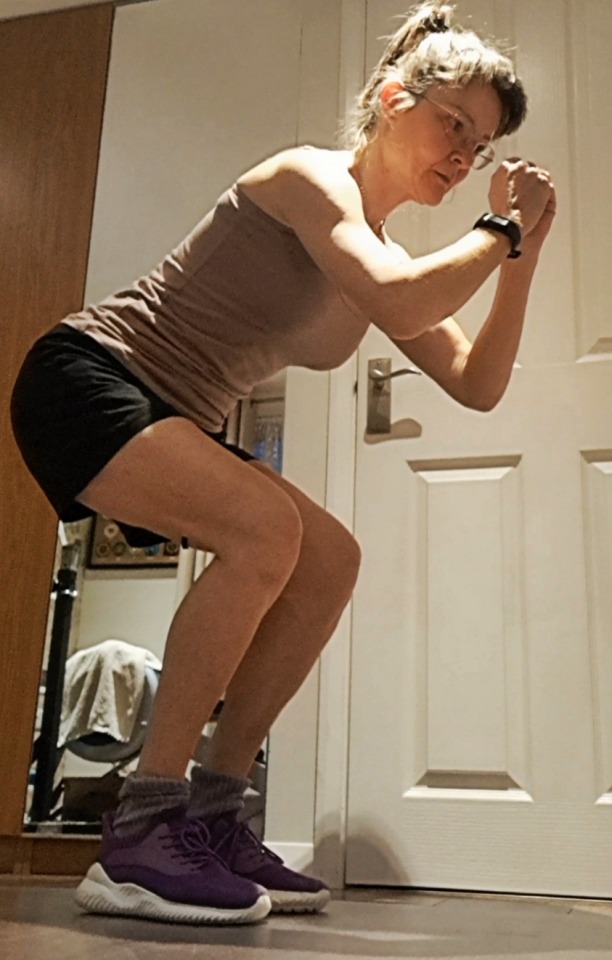#resistance training
Explore tagged Tumblr posts
Text
I can tell you all the right things to eat, but all of it cannot compensate for lack of movement. At some point you need to cross that bridge. I know how scary and intimidating it feels. I remember it well, but even on the tough days, moving your body will elevate your mood, clear your mind, and remind you just how powerful you are. Mobility and strength is how you play the longevity game. Your body wants and needs to move! Remember, it’s not about perfection; it’s about progress. 💪🏽🔥👊🏽
“Strength doesn’t come from what you can do. It comes from overcoming the things you once thought you couldn’t.” —Rikki Rogers
#fitness#health#healthy#guthealth#antiinflammatory#healthy habits#healthy lifestyle#lifestyle#Diet#nutrition#workout#fitness motivation#exercise motivation#exercise#goals#weightloss#weight loss#health journey#weight loss success#how to lose weight#weight loss tips#weight management#weight lifting#weight goals#weight loss journey#resistance training
11 notes
·
View notes
Text
I am going to try resistance training twice a week because we lose muscle mass and bone density as we get older and it’s supposed to help with that. The problem is I hate exercising inside so it’s going to take a lot of willpower to get myself to do it. I have some workout videos, weights, and moves I already know that I can mix up. There was this Claudia Schiffer workout I used to do back in the day that taught me a lot of exercises that use body weight that I remember well. If I can manage 20 minutes twice a week that’s better than nothing at all. 20 minutes is doable. I’ll start on Sunday.
Weight today: 121.6 lb./55kg (been maintaining here happily for a long time)
Protein intake: 96g
Fiber intake: 26g
Calories: 1796

7 notes
·
View notes
Text
is there a form of resistance/strength training that isn’t boring and doesn’t suck. lifting weights, body weight fitness etc are all deeply boring and repetitive to me and I never can make myself stick with them. I hike, bike, dance ballet, and do Tae Kwon Do, hot yoga, and aerial yoga/silks all at varying degrees of consistency but apparently none of that counts as resistance training (even though imo biking and aerial require quite a lot of strength). I really want to find something I will actually be motivated to stick with. I don’t give one single shit about aesthetic or strength related goals (I’m just trying to get ahead of a family health issue) so “seeing my progress” won’t motivate me. what will motivate me is having it be fun to do.
6 notes
·
View notes
Text
#fitness#fitness game#workout#workout game#Quell#Quell Impact#Shardfall#VR Fitness game#HIIT#Burn Over 600 Calories Per Hour#new year gifts#christmas gift#gift for her#gift for him#gift for a friend#gift for mom#gift for dad#gift for kids#resistance bands#resistance training#hiit workout#hiit training#hiit exercise#Exercise Game
3 notes
·
View notes
Text








After a lazy day yesterday, I'm back on it this morning.
A good combination of resistance and cardio for my lower body to start my day.
Then the part of my day that I always look forward to - coffee and peanuts as the sun rises.
An hour later, it was out in that wonderful natural light for a muddy, but excellent walk.
Made more excellent with a lovely coffee break towards the end!
#fitspo#fitspiration#fitblr#fitness#healthy living#health and fitness#fit#workout#fiton#suzieb-fit#walking#cardiovascular health#circadian rhythm#natural sunlight#lower body training#lower body exercises#resistance training#caffeine junkie
16 notes
·
View notes
Text
General Notes on Resistance Training Form
The most important thing to remember about "good form" is that you should not be in pain. Soreness is different, but sharp pain is never right. If you're not sure, always err on the side of stopping if you're experiencing discomfort.
Everyone's body is a little different, and you might find the standard coaching notes for a particular exercise just don't feel right to you.
So focus on the broad strokes:
No sharp pain or significant discomfort
Let your body make straight lines i.e.
-- Keep your back flat back- don't round it out by leaning back or hunching forward --Keep your joints in line with each other- shoulders over hips, knees over your ankles etc. don't lean out to the sides.
--Keep your shoulders away from your ears. This feels like you're trying to "pinch" something between your shoulder blades
Your muscles should be doing the work, really squeeze whichever muscles you're working with
-- Think about which body parts you're actually moving (like are you raising your arm for a shoulder press or squatting down for a box squat) make sure you're really squeezing the parts that are moving
-- Think about your stabilizing muscles. They're what's keeping you from tilting so you can maintain those straight lines. Make sure your core is engaged
--To engage your core and other stabilizers: ++Squeeze your glutes and your quads (your butt and your thighs)
++Squeeze your tummy like you're trying to move your belly button in and down. No matter what exercise we're doing, we need our stabilizers engaged. They protect us while we're doing work.
Inhale while you're at rest, exhale while you're doing work. Do not hold your breath. --So this might look like inhaling on the downward half of a squat and exhaling on the upward half.
--Or it might look like inhaling before you begin to move, exhaling on the downward half, inhaling again at the bottom, then exhaling again as you move back up.
Again these are just broad strokes for beginners trying stuff out for the first time. Yes you can get very technical with form, but for basic exercises, these are just good general rules to keep in mind.
#fitness#resistance training#beginner friendly#strength training#educational post#this is really just here so i can screenshot it for my fitness page on Facebook because the Tumblr screens are actually getting seen
27 notes
·
View notes
Text
One of the most significant lessons I’ve learned is the importance of maintaining muscle mass, which is one of the factors of longevity. This isn’t just about aesthetics; it’s about overall health and quality of life!
Dr. Gabrielle Lyon, a leading expert in the field of muscle-centric medicine, emphasizes that muscle is the organ of longevity. It plays a critical role in metabolic health, immune function, and even brain health. As we age, muscle mass naturally declines, which can lead to increased fat gain, and reduced strength.
To counteract this, adequate protein intake and consistent resistance training are crucial. According to Dr. Lyon, most adults need at least 1 gram of protein per pound of ideal body weight daily to support muscle health. This ensures that our bodies have the necessary building blocks to repair and build muscle tissue.
Resistance training, on the other hand, is essential for stimulating muscle growth and strength. It’s not just about lifting weights; it’s about challenging your muscles in a way that promotes growth and resilience. Even just 2-3 sessions per week can make a significant difference.
I’ve personally noticed and reaped these benefits. At 41 and in perimenopause, prioritizing protein and resistance training has helped me feel stronger, more energized, and better equipped to handle the changes that come with aging.
It’s never too late to start, and the benefits are truly life-changing. 💪🏽
#healthyaging #muscle #longevity #musclehealth #protein #strengthtraining #resistancetraining #agegracefully #fitover40 #longevity #musclematters #weightloss #healthjourney #hormonebalance #hormonehealth #proteinintake #fitnessover40 #healthylifestyle #strengthandhealth #musclemass #strongatanyage #fitnessmotivation #wellnessjourney #healthyliving #nutrition #food #healthyeating #health #heathy #healthyfood
#protein#nutrition#muscle#resistance training#weight lifting#hormone balance#health#Heathy#healthy lifestyle#healthyeating#healthy living#healthy aging#longevity#womenshealth
6 notes
·
View notes
Text
"after ten reps of anything it becomes cardio" great news as i am terrible at cardio
1 note
·
View note
Text
https://www.jezza-pt.co.uk/post/the-less-obvious-benefits-of-resistance-training
1 note
·
View note
Text
#Stand Up for Racial Justice#Do Not Comply#resistance training#organize resistance#something each of us can do
0 notes
Text
$40 Off Quell Impact Shardfall Fitness Gaming System Use Code: FRIEND-Q747G3K
$40 Off Quell Impact Use Code: 'FRIEND-Q747G3K' Enjoy This Last Minute Christmas Gift At A Discount! Burn over 600 calories per hour with the Quell Impact resistance bands and Shardfall fitness game system, a fantasy world where players must run, jump, duck, punch, block, dodge and spell cast their way through limitless levels. Shardfall is a hybrid rouge-lite with infinite runner and Rock'Em'Sock'Em'Robot mechanics. Enjoy high intensity full body workouts while playing the future of fitness gaming.
If you use my link you’ll get a discount if you order till Jan 11: https://quell.refr.cc/cash-offer/u/adamincipio?s=rp&t=cp
You can order any extra bands with this link: https://playquell.com/products/impact-bands
Also if you have a VR Headset or Nintendo Switch you can use the resistance band system with any game you want to experiment by adding more challenge or passive calorie burn.
#fitness#fitness game#workout#workout game#Quell#Quell Impact#Shardfall#VR Fitness game#HIIT#Burn Over 600 Calories Per Hour#new year gifts#christmas gift#gift for her#gift for him#gift for a friend#gift for mom#gift for dad#gift for kids#resistance bands#resistance training#hiit workout#hiit training#hiit exercise#Exercise Game
5 notes
·
View notes
Text
Strength Training Myths Every Woman Needs to Stop Believing
Forget strength training myths every woman needs to stop believing and learn how lifting weights transforms health. #strengthtraining #tonezone #goodhealth
Strength training helps build a strong, lean, and healthy body. Many women avoid lifting weights because of false beliefs that hold them back. These outdated ideas stop progress and keep many from reaching their full potential. Therefore, some fear getting bulky, while others think cardio is the only way to lose weight. However, misinformation makes strength training seem intimidating or…
0 notes
Text
Is Resistance Training Effective for Weight Loss? Find Out How
Resistance training is a game-changer when it comes to weight loss. Is resistance training good for weight loss? Absolutely! It helps build muscle, boosts metabolism, and burns fat. Learn how to incorporate it into your routine for better results, whether you’re a beginner or looking to enhance your fitness journey.
1 note
·
View note
Text

7 notes
·
View notes
Text
Can I Lift Weights After Getting Blood Drawn? Here's What You Need to Know
After a blood draw, your body might feel weaker or less energetic, making exercise a concern. It’s important to understand how long you should wait before lifting weights and the precautions to take. Proper hydration and rest play a vital role in recovery and preventing dizziness or fatigue. If you’ve ever wondered, can I lift weights after getting blood drawn?.This blog provides clear and practical insights. Learn how to exercise safely post-blood draw.
0 notes
Text
Grease the Groove Method: How to Incorporate High-Frequency Training for Strength Improvement
The Grease the Groove (GTG) method, popularized by strength coach Pavel Tsatsouline, is a training philosophy focused on building strength and proficiency in specific movements through frequent, submaximal practice. Unlike traditional workout routines that prioritize volume and fatigue, GTG emphasizes repetition and technique, allowing athletes to improve their neuromuscular coordination and gain…

View On WordPress
#advanced fitness techniques#advanced training methods#Bodyweight exercises#Consistent training#fitness philosophy#fitness tips#Functional fitness#grease the groove#high-frequency training#high-frequency workouts#kettlebell training#movement mastery#neuromuscular efficiency#Pavel Tsatsouline#pull-ups#push-ups#Resistance training#skill-based strength#Strength gains#strength improvement#strength program#Strength training#strength training method#strength without fatigue#strength-building exercises#submaximal effort#workout efficiency#Workout routine
0 notes